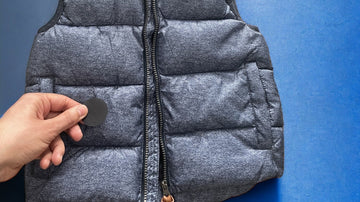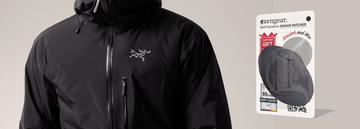Weathering the Storm: Waterproofing Strategies for Patched Down Jackets
by Emily Jannet on Jan 31, 2024
With dropping temperatures and the need for a dependable down jacket, it becomes crucial to navigate the elements successfully. Yet, when considering how to uphold the waterproof capabilities of your patched down jacket, certain concerns may emerge. In this guide, we will explore effective waterproofing strategies to guarantee that patched areas maintain their resistance to water, providing you with the ability to face adverse weather conditions in both style and comfort.
Understanding the Challenge
Down jackets are prized for their exceptional insulation properties, often relying on a combination of natural down feathers and synthetic materials. However, the very features that make them excellent insulators can pose challenges when it comes to waterproofing. Patches, while effective in repairing tears and punctures, may compromise the jacket's ability to repel water.
The Basics of Down Jacket Waterproofing
-
Choose the Right Patch Material
Begin the waterproofing process by selecting patch materials with inherent water-resistant properties. Waterproof fabrics can help maintain the jacket's ability to repel water.
-
Seal Seams with Waterproof Tape
Invest in waterproof seam-sealing tape to reinforce the stitched edges of the patches. Apply the tape along the seams to create an additional barrier against water penetration.
-
Spray-On DWR (Durable Water Repellent) Treatment
DWR is a chemical treatment that enhances the water-resistant qualities of fabrics. After patching your down jacket, apply a spray-on DWR treatment to the entire jacket, focusing on the patched areas. Ensure the jacket is clean and dry before application.
Tips for Patch-Specific Waterproofing
-
Patch Overlaps
When applying patches, ensure there is sufficient overlap onto the original fabric. This helps create a seamless integration, reducing the chances of water seeping through the edges of the patch.
-
Conduct Water Repellency Tests
Regularly test the water repellency of your patched jacket by sprinkling water on the surface. Observe how water beads on the fabric. If water begins to absorb, it's time for a reapplication of DWR treatment.
-
Focus on High-Wear Areas
Concentrate waterproofing efforts on areas that experience higher wear and tear, such as the elbows and shoulders. These areas are more prone to losing water repellency over time.
Maintenance and Long-Term Strategies
-
Gentle Washing and Cleaning
Use a gentle, down-specific detergent when washing your down jacket. Harsh detergents can strip away the DWR treatment. Ensure the jacket is thoroughly rinsed, and avoid fabric softeners as they can impact water repellency.
-
Air Drying vs. Tumble Drying
Opt for air drying over tumble drying whenever possible. Excessive heat from tumble drying can degrade the DWR treatment. If using a tumble dryer, ensure it's on a low heat setting.
-
Reapply DWR Treatment Periodically
Over time, the DWR treatment on your down jacket may wear off. Stay proactive by periodically reapplying the treatment, especially after washing the jacket.
Advanced Waterproofing Techniques
For those seeking an extra layer of water resistance, consider waxing your patched down jacket. Beeswax or specialized fabric wax can be applied to the patched areas, creating a durable water-resistant barrier.
Patching up your down jacket doesn't mean compromising its ability to withstand the elements. By choosing the right patch materials, employing effective waterproofing strategies, and adopting proactive maintenance measures, you can ensure that your patched down jacket remains a reliable shield against rain and snow. With these tips and tricks, you'll be well-equipped to weather the storm in your favourite, weather-resistant down jacket.





